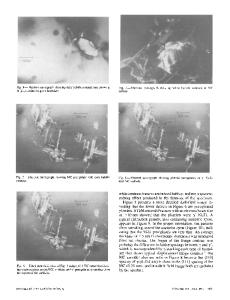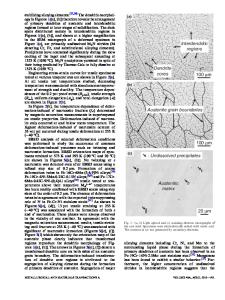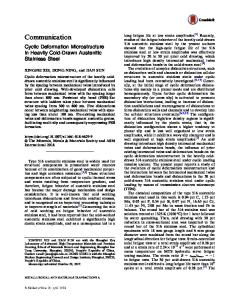Surface segregation in austenitic stainless steel
- PDF / 661,372 Bytes
- 8 Pages / 594 x 774 pts Page_size
- 67 Downloads / 356 Views
I.
INTRODUCTION
THE grain
boundaries and surfaces of solids often have significantly different chemical compositions from the bulk. Elements with low bulk solubilities often prefer to occupy sites at these interfaces instead of in the lattice because of the structural irregularity at the interfaces. ~,2,3 With the development of Auger electron spectroscopy4 it has become possible to study the chemical composition of many of these interfaces. In particular, a number of investigators have studied the chemical composition of grain boundaries and of the vacuum-surface interface. (References 2 and 3 review these studies.) In most of these experiments segregation of certain elements to these interfaces has been measured as a function of time and heat treatment. In this paper we report a study of surface segregation in austenitic stainless steels. We will show that phosphorus, sulfur, and nitrogen are the three most common impurity elements that segregate to the surfaces of these steels. Furthermore, a site competition is clearly observed between phosphorus and nitrogen, nitrogen and carbon, and sulfur and phosphorus. Chromium co-segregates with nitrogen and sulfur; nickel segregation is independent of all of the other elements. We also discuss a method to predict these interactions and the applicability of these measurements to various metallurgical problems.
II.
EXPERIMENTAL
One commercial 304 stainless steel alloy, one commercial 316L stainless steel alloy, and four specially made laboratory 304 stainless steel alloys were used for this study. The chemical compositions are given in Table I. Table I.
The samples used for this study were electropolished disks 0.08 cm thick and 0.64 cm in diameter. Two parallel tungsten wires, 0.25 mm diameter, were spot welded to opposite points of the sample for heating; a chromel-alumel thermocouple was attached to the back of the sample for temperature measurement. The diagram in Figure 1 shows. this arrangement. Because the wires were connected to high conductivity plates below the sample, little current passed through the samples; it was therefore heated by conduction from the resistively heated wires. In all of the Auger experiments segregation of elements was monitored as a function of time at a given temperature. A primary beam voltage of 5 keV was used. The sample was sputter cleaned at the temperature of interest and then all measurements were made at that temperature. Throughout this study we have reported concentrations as peak height ratios; the Fe 703 eV peak was used for normalization. For all other elements we used the following peaks: P 120 eV, S 152 eV, C 272 eV, N 379 eV, Cr 389 eV, and Ni 848 eV. The beam diameter for these experiments was --5 /xm. The vacuum during the experiments was 1 to 3 • 10 -9 torr. We found that once the sample was in place in the spectrometer a careful series of annealing treatments had to be performed if accurate and reproducible data were to be obtained. First, the sample had to be annealed at a moderate temperature to allow segregat
Data Loading...











